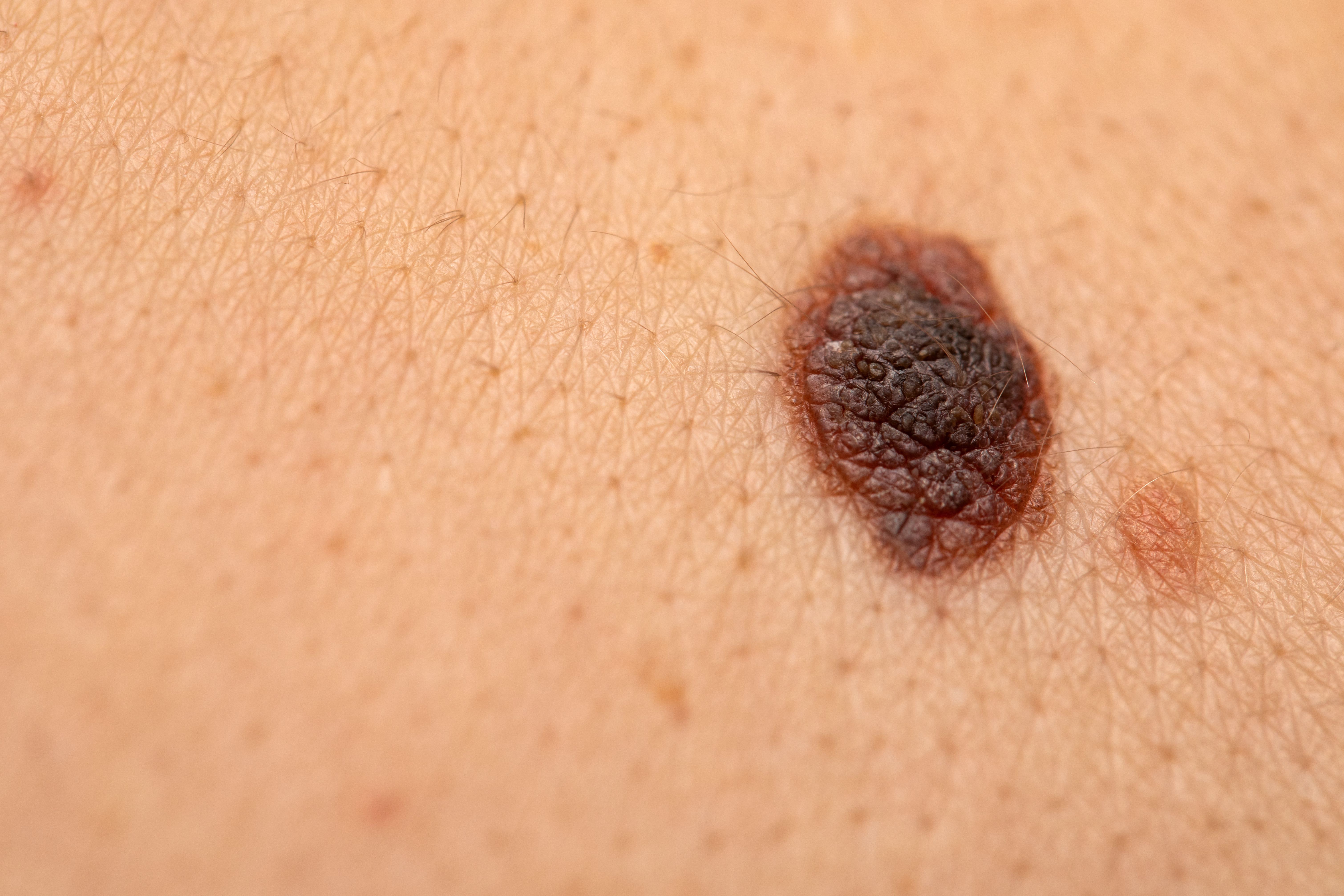- Center on Health Equity & Access
- Clinical
- Health Care Cost
- Health Care Delivery
- Insurance
- Policy
- Technology
- Value-Based Care
Exploration of Melanoma Incidence, Mortality Rates Urges Further Research
A retrospective analysis out of Denmark could not find a causal relationship to explain trends in melanoma incidence and mortality rates, demonstrating the need for more research in this area.
As incidences of melanoma and performed biopsies have increased, mortality rates have remained relatively stagnant. While prior explanations often cite the role of varying diagnostic thresholds among pathologists, overdiagnoses, or advancements in melanoma treatment, a study recently published in British Journal of Dermatology suggests more research is needed to determine any causal relationships in these trends.1
Skin Lesion | image credit: Ocskay Mark - stock.adobe.com

According to a global burden of disease study conducted in 2019, there was an average global increase of 1.13% in cases of cutaneous melanoma (95% CI, 0.93-1.32) each year between 1990 and 2019. During this period, rates of age-standardized mortality decreased by 0.27% (95% CI, 0.19-0.36).2 As the authors of the present study note, this trend is not fully understood. Analyzing behavioral patterns that lead to more sun exposure (tanning bed use, vacation destinations, etc.), changes in melanoma treatment interventions, and diagnostic approaches (reduced diagnostic thresholds, overdiagnoses, etc.) have not offered adequate explanations for this discrepancy.
To address this knowledge gap, Nielsen et al conducted a study to evaluate the various factors associated with melanoma—including treatment, ultraviolet [UV] exposure, diagnosis patterns, and more—that could impact incidence and mortality rates in Denmark.
Data were gathered from a national health care system to survey 5.5 million people. Patient biopsies from melanocytic skin lesions from the Danish Pathology Data Bank (DPDB) from 1999-2019 were retrospectively analyzed to investigate diagnoses and subsequent mortalities in this population. Among the patients surveyed, the authors created 3 groups according to age: 15-44 years; 45-59 years; and 60 years or older.1
Among the 5.5 million people, melanocyte-related diagnoses were seen in 1,434,798 biopsies. Of these biopsies, an overwhelming 93.1% (n = 1,336,361) were benign, whereas 3.5% (n = 49,895) were invasive melanoma, 2.2% (n = 31,127) were considered atypical, and 1.2% (n = 17,415) were in-situ melanoma. There were 11,572 people who experienced more than 1 diagnosis for melanoma during the study period, and the average age of biopsy fell between 37-40 years. Additionally, 57.5% (n = 405,098) of people only had a single biopsy, compared with 42.5% (n = 299,584) who underwent multiple.
The researchers observed that biopsy rates in men grew by 153% (540 to 1364 per 100,000 population per year) from 1999-2011, and rates in women grew by 118% (1272 to 2772). By 2019, these rates had dropped in men and women by 20% (1364 to 1085) and 22% (2772 to 2165), respectively. Additionally, the authors noted that younger individuals and women generally underwent more biopsies compared with older individuals and men.
Cases of benign lesions in men and women grew by 149% (504 to 1256) and 114% (1227 to 2631) from 1999-2011. Trending similarly to biopsy rates, reports of these cases fell for men and women by 25% (1256 to 937) and 24% (2631 to 1991), respectively. As for atypical skin lesions, the prevalence of these cases increased by 1928% for men (3 to 61 per 100,000 per year) and 1686% (4 to 77) for women throughout the entire study period. Additionally, from 1999-2019, in-situ melanoma incidences increased by 476% (5.12 to 29.48) in men and 357% (7.26 to 33.21). The prevalence of invasive melanoma grew by 87% in both men and women (28 to 1999; 34 to 63, respectively) from 1999-2011. In the subsequent 8 years, each group experienced a 9% incidence increase.
In the 21-year study period, the authors wrote, mortality rates ranged from 4.57-6.79 in men and 3.98-5.01 in women. During this time, the group aged 45-60 years exhibited a similar pattern; however, incidences were an estimated 3 times higher compared with the younger age group. While the eldest age group also trended similarly, incidences among this group were 8 times that of the youngest age group.
The authors wrote that their analysis revealed a strong association between biopsy rates and benign lesions (R = 0.99), as well as melanoma (R = 0.82 in men; 0.86 in women), atypical (R = 0.69), and in-situ (R = 0.67) incidence. A linear regression analysis further showed that for every additional biopsy, the incidence of melanoma would increase by 0.01 (95% CI, 0.01-0.02 in men and 0.00-0.01 in women).
“We have not been able to support increased UV exposure as an explanation of increased melanoma incidence before or during the study period. Rather, exposure would be expected to decline following various public 3 information campaigns,” the authors concluded.
“The other explanations seem more plausible. Late-stage melanoma treatment has gradually been improved since 2010. The data demonstrate increased diagnostic activity, and particularly in populationgroups with the lowest melanoma risk. The findings are compatible with overdiagnosis, but earlier diagnosis and treatment may, at least in part, explain the findings. The rapid increase in atypical and in-situ relative to invasive melanoma could be associated with changes in pathologists’ threshold for specifying these diagnoses. It is conceivable that the threshold for atypical and in-situ as well as for invasive melanoma have declined because of increased melanoma awareness.”
References
1. Nielsen JB, Kristiansen IS, Thapa S. Increasing melanoma incidence with unchanged mortality: more sunshine, better treatment, increased diagnostic activity, overdiagnosis or lowered diagnostic threshold? Br J Dermatol. 202:ljae175. doi:10.1093/bjd/ljae175
2. Li Z, Fang Y, Chen H, et al. Spatiotemporal trends of the global burden of melanoma in 204 countries and territories from 1990 to 2019: Results from the 2019 global burden of disease study. Neoplasia. 2022;24(1):12-21. doi:10.1016/j.neo.2021.11.013
